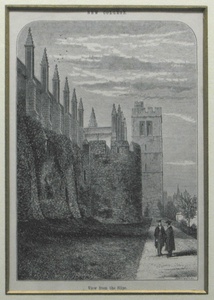| Method | Woodcut with hand colouring |
| Artist | John Gerard |
| Published | London Printed by Adam Islip, Joice Norton and Richard Whitakers. Anno 1636. |
| Dimensions | Image 168 x 198 mm |
| Notes |
A double image from John Gerard's 'The Herball, or, Generall historie of plantes' first published in 1597. 'The Herball, or, Generall historie of plantes' was a celebrated plant catalogue featuring more than 1,800 woodcuts covering over 1,000 species. Although Gerard claimed complete credit for the work covered in the 'Herball' it is actually based on a translation of 'Stirpium historiae pemptades sex' (1583), by the Flemish botanist Rembertus Dodoens (1517 - 1585). The woodcuts used in Gerard's 'Herball' were obtained by the printer John Norton after having been used to illustrate Jacobus Theodorus Tabernaemontanus' 1588 'Neuw Kreuterbuch, Mit schönen, künstlichen und leblichen Figuren unnd Conterfeyten, aller Gewächss der Kreuter'. Many of the blocks were also used in earlier European botanical publications including Rembert Dodoens' 1583 'Stirpium historiae pemptades sex' and Pietro Andrea Mattioli's 1568 Italian translation of Dioscorides. John Gerard (c. 1545 – 1612) was an English herbalist most known for his celebrated book Herball, or Generall Historie of Plantes, first published in 1597. Born in Nantwich, Cheshire as a member of the House Gerards of Ince, Gerard trained as a barber-surgeon in London from the age of 17. Whilst studying to become a surgeon he became interested in plants and started his garden in Holborn which later became the basis for the plants detailed in his Herball. Gerard's garden and writings on plants gained popularity and he started to receive gifts of seeds and plant specimens from around the world. Gerard proceeded to work at the gardens of noblemen including William Cecil, 1st Baron Burghley (the Queen's Lord High Treasurer). Gerard claimed he learnt of plants from his extensive travels but his actual travels appear to have been limited to a single trip overseas around the North Sea in his youth. In his later life he had firmly solidified his reputation as a skilled herbalist and in 1597 published the Herball which became a popular gardening and herbal book. Gerard died in 1612 and is buried in an unmarked grave in St. Andrews, Holborn. |
| Framing | mounted |
| Price | £125.00 |
| Stock ID | 5502 |

